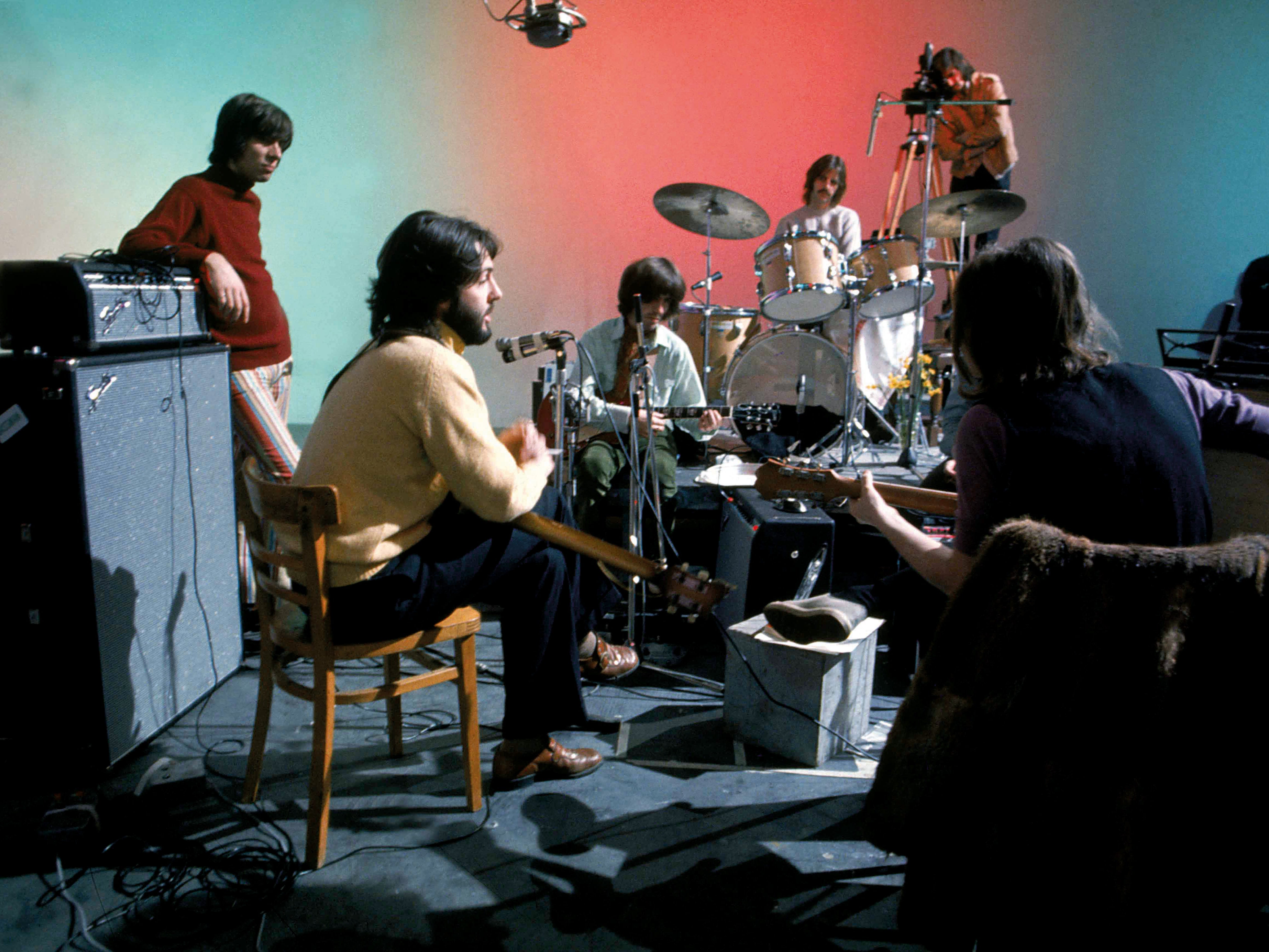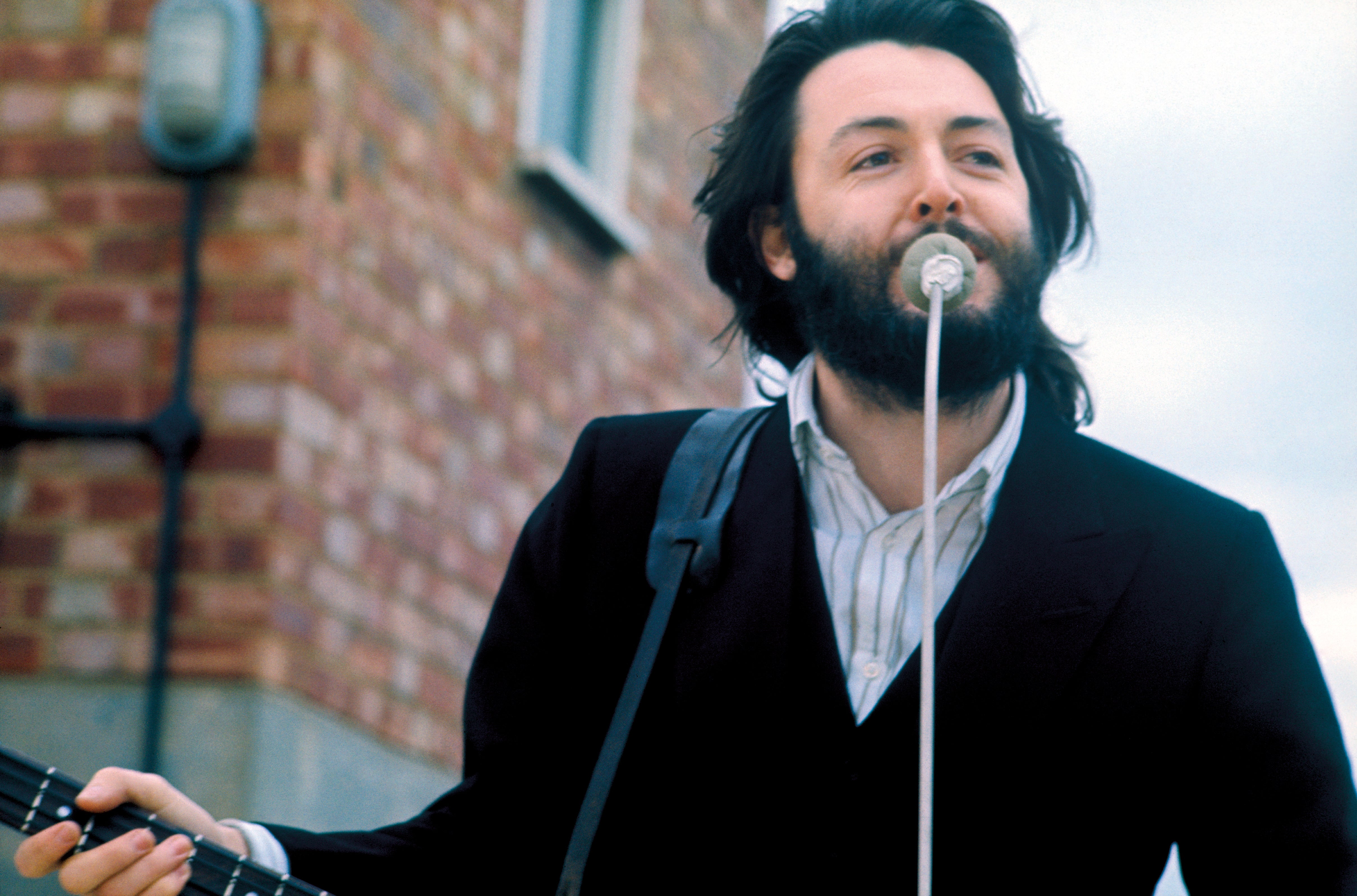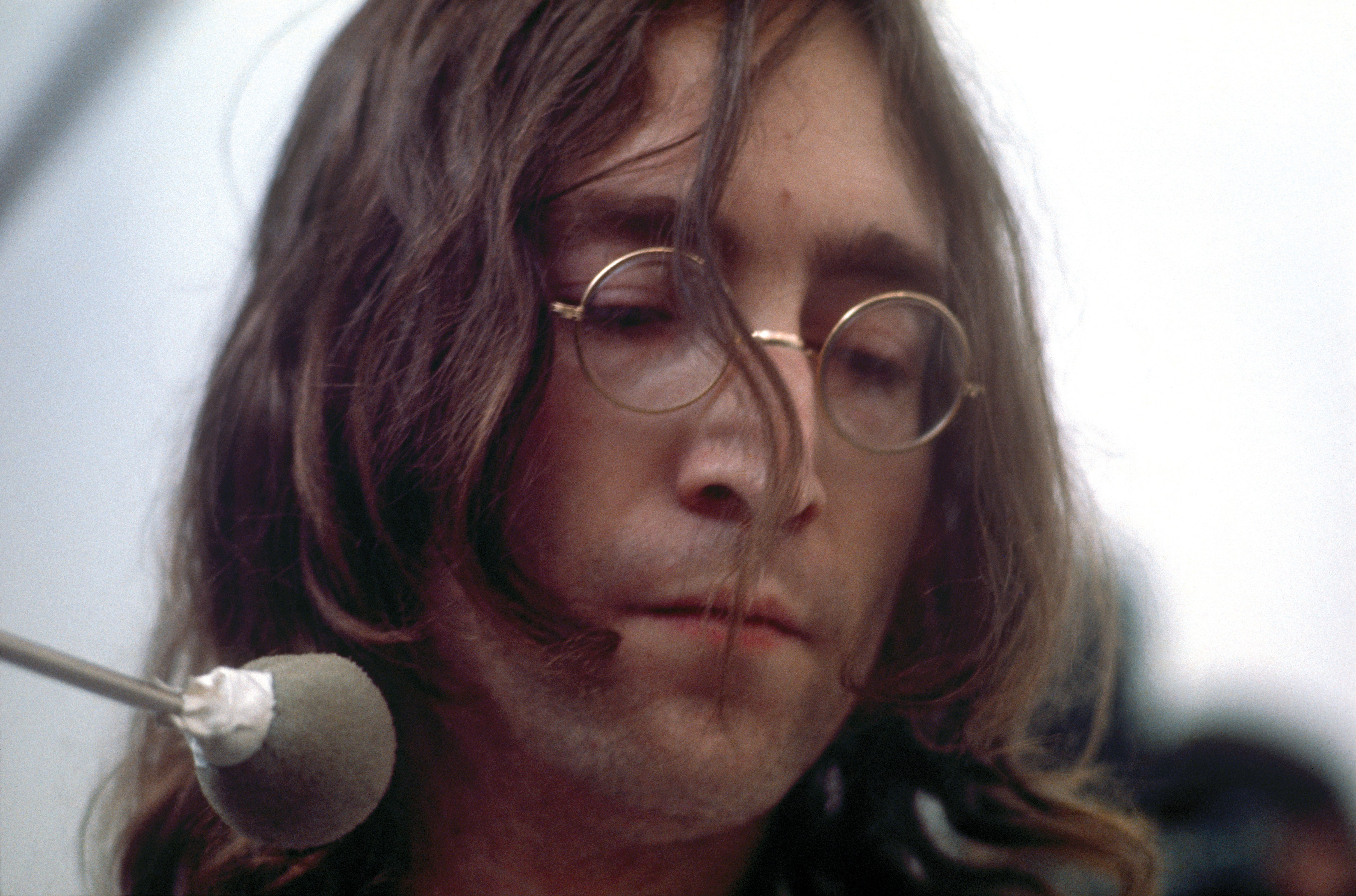Peter Jackson on The Beatles and Get Back: ‘I get the feeling now that history has arrived’
The legendary film director spent the pandemic sifting through 56 hours of unseen footage of the Fab Four’s final act, which he has edited into an epic three-part documentary. It might change how you see their split, he tells Roisin O’Connor


At the height of Beatlemania, trying to infiltrate the Fab Four’s world to see their true selves was a challenge of Herculean proportions. So imagine trying to shove a camera in their face and film them at close quarters, as Michael Lindsay-Hogg did in 1969. It did not go well. In Peter Jackson’s new three-part documentary Get Back – based on 56 hours of Lindsay-Hogg’s never-before-seen footage of the band in their final throes – you see just what a task his forerunner had on his hands, as he tried to convince the biggest band in the world to cooperate. They were having none of it.
“They would say, ‘No, no, absolutely not. You’re not gonna be showing that bit,’” Jackson recalls, laughing at the memory of what he found when he began delving into those treasured archives. “The Beatles [were] famously in control of how they came across – it took them decades to release a single track. But I get the feeling now that history has arrived.”
To make his documentary, the New Zealander was granted unprecedented access to the near-legendary, unedited footage from the Let It Be sessions, which had sat untouched in the vaults of Apple Corps (the Beatles-founded company that handles their affairs) for half a century. It had long since become a blot on The Beatles’ timeline, with the band scrambling to come up with new songs, a venue for the show, and some way to get through to the other side without strangling one another.
At the time, Lindsay-Hogg’s documentary was accused of showing this to the world in all its ugly glory. Understandably, then, Jackson was wary – plans to restore and release the footage had been ditched before – but after viewing what was there, he knew he had to do it. “My mind is still blown at the fact that this actually exists,” the 60-year-old says. “The most remarkable thing about this isn’t what I’ve done, it’s the fact that Michael Lindsay-Hogg shot this footage 52 years ago.”

As you’d expect from the man behind the Lord of the Rings and Hobbit trilogies: what initially began as a one-off documentary is now a three-part Disney+ series, with each episode around two hours in length. The result is magnificent. In his five-star review, The Independent’s TV critic Ed Cumming described it as “a monument to The Beatles, enormous and revealing, which acts as a bulwark against the endless books and articles and chatter about them by simply showing them as they were”.
To restore the footage, Jackson used the same state-of-the-art digital technology as he did for 2018’s astonishing First World War film They Shall Not Grow Old. While Lindsay-Hogg’s material required less visual editing, the audio needed work. Listening to the recordings all those years later, Jackson felt something like a CIA agent. “Because I’m a Beatles fan, I understand the nuances and the relevance of a lot of the little things they talk about,” he says.
Looking through the film archives, he learned that the band had, on occasion, sabotaged Lindsay-Hogg’s audio recordings on purpose. “We came to realise that John [Lennon] and George [Harrison] in particular were very aware that their private conversations were being taped,” he says. “Michael hid microphones everywhere to try and capture candid conversations. But what John and George used to do was turn their amps up loud and strum their guitars – not playing anything – so that’s all Michael’s microphones were recording. They were in this sort of running battle.”
It’s only decades later that Lennon and Harrison were foiled by technology, as Jackson’s team was able to strip the guitar audio away and finally expose what they had been talking about. “It’s a little bit naughty,” Jackson admits. But then, you could argue, so was the amp prank.
Let It Be was released in May 1970, just weeks after Paul McCartney confirmed The Beatles had split for good. It was originally intended to show the band in the build-up to a major concert, the location of which was still being decided. Lindsay-Hogg had been hired by the band to capture it all. But his documentary was consequently tainted by the perception that it had been filmed during a time of bitter tension – as inappropriate as someone whipping out their phone to record a car crash. Jackson was determined to change our understanding of those events.
January 1969: the band are rehearsing and working on new songs at Twickenham film studios, trying to decide where to stage a big filmed performance. The excitement in the air is tangible and everyone seems happy to be back together, even if they are being recorded. You see Ringo Starr clowning around at his drumkit and the unbeatable chemistry that alchemised some of the greatest songs the world has ever known. “You’re working so well together: you’re looking at each other, you’re seeing each other, you’re just happening,” producer George Martin tells them during a visit, hearing songs that would end up on Let It Be (“Get Back”, “Don’t Let Me Down”), but also gems from Abbey Road, released in September that year, and material released on their solo records.
Jackson says it’s testament to the band that they were able to work through the Twickenham sessions without drawing blood (the documentary includes myth-dispelling footage of the band scoffing over a newspaper story, which claimed that Harrison left after a physical fight with Lennon). “They have their own opinions,” Jackson says of the four members. “They deal with things in a different way. But if anything, I came away respecting them more. Because when you pull the veil away and you see the unvarnished truth, you prepare yourself to be disappointed in some way. I didn’t find that.” What did he find? “The opportunity to think of them as human beings,” he says. “I came away thinking of them as decent, sensible guys. They have disagreements, they have different ambitions. [But] there’s no ego, no prima donna [behaviour].”
If anything, I came away respecting them more
Ringo Starr and Paul McCartney both seem pleased with what the film captures. “I was always moaning about the original film, because there was no real joy in it,” Starr told InsideHook. “I think everyone will enjoy Get Back, though, because you get to see this band work really hard and go through emotional ups and downs to get to where we got in the end. And we did get there. Every time.”
“I’ll tell you what is really fabulous about it, it shows the four of us having a ball,” McCartney told The Sunday Times after watching Jackson’s cut. “It was so reaffirming for me. That was one of the important things about The Beatles, we could make each other laugh.” He cited a clip of him and Lennon larking about, doing “Two Of Us” like ventriloquists. “It just proves to me that my main memory of The Beatles was the joy and the skill,” he said. He admitted that even he – someone who was there, at the heart of it all – was convinced of the mayhem surrounding that period for the band. Asked if watching the footage changed his feelings about the part he played in the split, he answered: “Really yes. And there is proof in the footage. Because I definitely bought into the dark side of The Beatles breaking up and thought, ‘God, I’m to blame.’”

“Paul actually said to me when he saw it, ‘That’s a very accurate portrait of how we were then,’” Jackson says. He didn’t receive any other notes on the finished series, compared to poor Lindsay-Hogg, who dealt with the band coming into his cutting room and requesting changes. “I get the feeling there’s no concern about their image anymore,” he says. He was careful not to twist things or misrepresent an offhand quote from an hour-long conversation while staying truthful to the footage. “I tried to portray them as I was seeing them,” says Jackson. “[And] the band themselves didn’t want a whitewash. They didn’t want it sanitised.”
Jackson’s no-holds-barred approach means that there are plenty of difficult on-camera moments as well (not least of all from Lindsay-Hogg himself, who is still alive, now 81, and makes a fair few culturally insensitive gaffes). A key moment is when George Harrison left the band on 10 January, 1969. “Got up, went to Twickenham, rehearsed until lunchtime, left The Beatles,” the blunt entry in his diary read. But it’s the ensuing fallout that makes for one of the documentary’s most fascinating sequences.“The moment when George walks out, they’ve got a huge problem,” Jackson says. “There’s nothing [new] to reveal [apart from] how they respond to the crisis. And that’s interesting.”

Indeed, we see Starr, Lennon and McCartney discussing Harrison’s departure, and Lennon admitting he would choose Yoko Ono over any of them. “I would sacrifice you all for her,” he says. Later on, McCartney warns the others against trying to interfere with the couple’s relationship, even if they disliked how Ono seemed perpetually glued to Lennon’s side. “They’re going overboard about it, but John always does, you know, and Yoko probably always does,” he says. “So that’s their scene. You can’t go saying, ‘Don’t go overboard about this thing, be sensible about it and don’t bring her to meetings.’ With hilarious prescience, he also envisioned how Ono would probably be blamed for breaking up the band: “It’s going to be such an incredible sort of comical thing, like, in 50 years’ time,” he says. “‘They broke up ’cause Yoko sat on an amp’ or something like that… it’s not as though there’s any sort of earth-splitting rows or anything.”
Jackson seems keenly aware of the unenviable task he had on his hands, of creating something “new” about The Beatles that would appeal to both aficionados and casual fans. What he believes about Get Back is that it shows a genuinely different side to the legends – one no one has really seen before. “Even when you’re in a press conference, you’re trying to be natural and be yourself, but you’re aware there’s an audience,” he says. “What this does, when it’s most candid, is you’re getting a 100 per cent pure look at the guys, which doesn’t really exist on film anywhere else. It’s a fly on the wall of this very ambitious project as it begins to derail. Now, what better way to learn about people’s characters than to see how they cope with problems?”

Ultimately, Jackson wanted to offer something that would, hopefully, cheer people up after a “s****y year”. He feels fortunate that this is the way he spent the pandemic, sifting through all that footage, building to the moment on 30 January 1969 when the band took to the roof of the Apple Corp building at 3 Savile Row, London, not knowing this would be their final ever performance. The band “were cheering us up the whole time”, Jackson says. “We tried to make [Get Back] happy and joyous, because we felt people needed that. And who better than The Beatles to bring a smile to our faces?”
‘Get Back’ is out on Disney+ now



Join our commenting forum
Join thought-provoking conversations, follow other Independent readers and see their replies
Comments